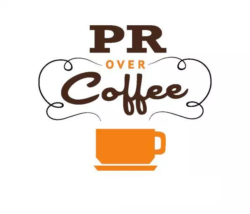Building Better Media Relationships
Having a large Rolodex and generally being good at talking to people will only get you so far when it comes to earning media coverage for your clients. As a PR pro, it’s less...
Filter by Category

Having a large Rolodex and generally being good at talking to people will only get you so far when it comes to earning media coverage for your clients. As a PR pro, it’s less...
Posted by Weslie Oeftering

Are you an aspiring Public Relations professional looking for an opportunity to advance your skills and career with a creative agency? We are looking for a hardworking PR Intern...
Posted by provercoffee

There are few things more enjoyable to a PR professional than getting a small retailer into the local news. Be it a TV interview or a write-up in the local newspaper or an online...
Posted by Weslie Oeftering

Congratulations, you’re about to start a new business! Or, maybe you’re just thinking about it and still putting all the pieces (i.e. the budget) together. No matter where you are...
Posted by Weslie Oeftering

Facebook was founded almost 15 years ago. Twitter came a short time later in 2006. Despite having over a decade to master communication on each of these platforms (and all of the...
Posted by Weslie Oeftering

I would love to be able to say that when it comes to executing public relations campaigns you can just jump right in. You can, but you shouldn’t. As is the case with almost...
Posted by Weslie Oeftering

As a PR student, whenever I see my family, they inevitably always ask me: “So, what is PR, anyway?” It’s a great question because not everybody knows what PR stands for, let alone...
Posted by Weslie Oeftering

2018 was an exciting year for the PR industry. There were data breaches, social media crises, CEOs lacking self-awareness, artificial intelligence, and an increasing focus on...
Posted by Weslie Oeftering

Podcasts are a great way for PR professionals to stay current while they are on the go. Podcasts inform them about the latest trends, discuss books they really need to read, offer...
Posted by Weslie Oeftering

Much has been made about the demise of the news media in the age of the Internet and social media. Contrary to popular opinion, however, many media outlets are surviving, and some...
Posted by Weslie Oeftering

Having a large Rolodex and generally being good at talking to people will only get you so far when it comes to earning media coverage for your clients. As a PR pro, it’s less about sending mass emails to all your contacts and more about how you create and maintain relationships that will set you apart from the rest of the pack – both in the eyes of your media contacts and potential clients. A holistic approach that tailors pitches to fit your preferred media contact will do wonders for your reputation with the media.
A few tips to become the most holistic-minded PR pro on the block are as follows:
Do not mass email the exact same information about your client to every single contact on your media list. Instead, do some research, and e-mail the ones that you think will be the best fit for your client. This will help you stay organized and keep you from annoying your contact over at Food Network Magazine with a pitch about your client’s new microprocessor. As for the contents of the e-mail, it should contain 3 key things.
Your greeting can be as simple as “Hi, ______! Hope your Monday is treating you well.” If you know them well, you can say something like “Hi, ______! Hope your daughter’s dance recital went well.” However, it should not be just a simple hello; You’re trying to forge a relationship with this person – so make it personal!
If you’ve never reached out to this person before, make sure you briefly introduce yourself and before tumbling head first into the rest of the email. They don’t need your life story, but your name, position and company (and your company’s location, if you’re reaching out from out-of-town) should do the trick.
This should be similar to the way you introduced yourself. The company, the pitch topic and why you think it would be a great fit for their media outlet
Most initial emails should contain a question that needs responding to. In this case, the question should focus on whether or not they would like you to follow-up with further information. Be sure to give them options for how they can receive this information (email, phone call, over coffee, etc) and a time frame. This time frame is not “get back to me by such date and such time: or else,” it’s more like, “If you would like more information, I’d be happy to hop on a phone call with you sometime next week.”
If they don’t respond it does not mean that they just didn’t see your email or that they saw it and just forgot to reply, it means no – which is okay!
Don’t let “no” discourage you. It means that you get to become even more organized by crossing them off this particular media list. You can still contact them in the future with other opportunities to work together. And, because you asked to send them further information instead of just inappropriately sending it all in one giant email, you have still treated them with respect and therefore strengthened your relationship with them.
Even without the hundreds of emails they get a day from PR professionals trying to get their attention by any means necessary, journalists are still really busy people. That means when they do respond asking you for further information, give them all the information they need in an organized way. Journalists (and all people, really) don’t like it when they have to pull teeth to extract all the necessary information from you or have to sift through mounds of disorganized data. The faster and more organized you can be, the better your relationship will be.
The issue with sugar coated pitches is that they often promise things that you can’t guarantee. Being as transparent as possible with what you can do for them and then actually delivering on those problems is a great way to save time, headaches, and earn their trust. Unless you are absolutely sure that you can get them prototypes of a product or an interview with a c-suite executive, then don’t say so. If you’re unsure in the moment it’s alright to say, “I’m not sure, but I will find out for you,” as long as you actually work toward finding out for them.
Sometimes, despite all your best work, a story just never comes to fruition. A media contact is often at the mercy of their editor, or finds a more pressing story that puts yours on the back burner. Learning how to move on without taking this personally is the best thing to do for your professional relationship.
If your story does come to fruition, be sure to be there when they need you – but don’t over-involve yourself in a part of the process that just isn’t your job. Your PR skills have gotten you this far in the process, but it’s important to know when to step aside and let them do what they do best.
Just like you would with any friend, keep up with them. Obviously, share the piece that you worked on together far and wide – but also read their other work, too. Keeping up with them in this way will help keep your privy to any information about them moving to a different company. This does not mean that you should be constantly emailing or calling them just to say hi or see how they have been – both of you probably have better things to do. Any information you need to keep updated about them should be available online, so only directly contact them when you have something to pitch. If your relationship is strong enough, you might contact them looking to see if they can refer you to anyone for a potential story.
In PR, a reputation for organization and treating people with respect can take you far – these tips will help you start building better media relationships in no time!
About Weslie Oeftering: Weslie is a student at The University of Texas at Austin and Swyft’s resident PR and marketing intern. She supports clients with social media, blogging, and tech PR activities. Swyft is a PR and marketing agency with offices in Austin, Houston, and Denver that provide services for tech companies all around the world who are seeking rapid, sustained growth. Some of their services include content marketing, social media strategy, as well as ad buys, email marketing, and media relations.

Small businesses and PR are like Oil & Vinegar. They can be at odds, tasting acidic and unctuous without accomplishing anything special; or they can be vigorously combined and...

Working with a PR firm can be an exhilarating time for a company (or nonprofit). PR can put you in the public eye like no other marketing activity. Indeed, your first time on...